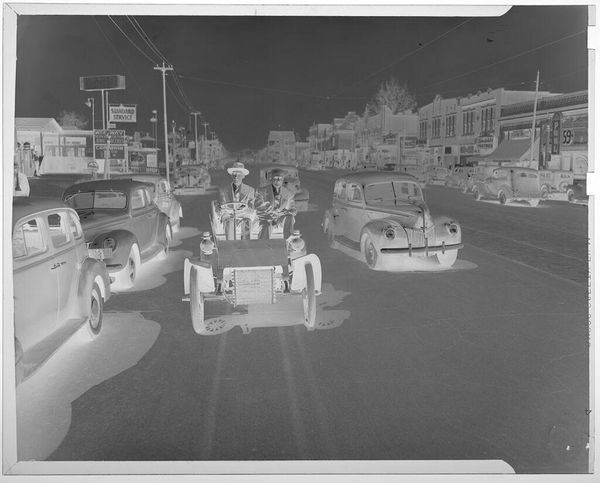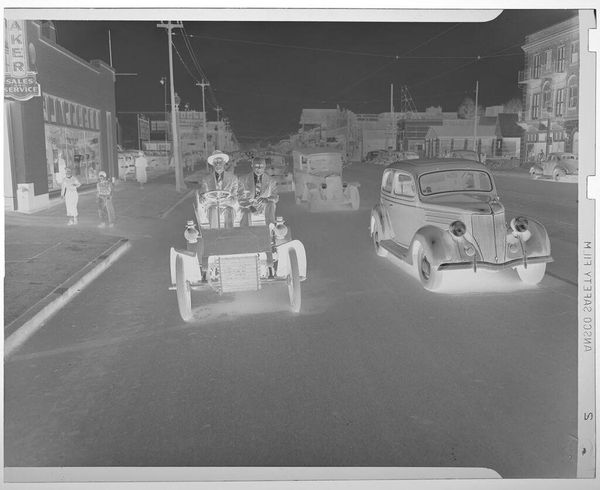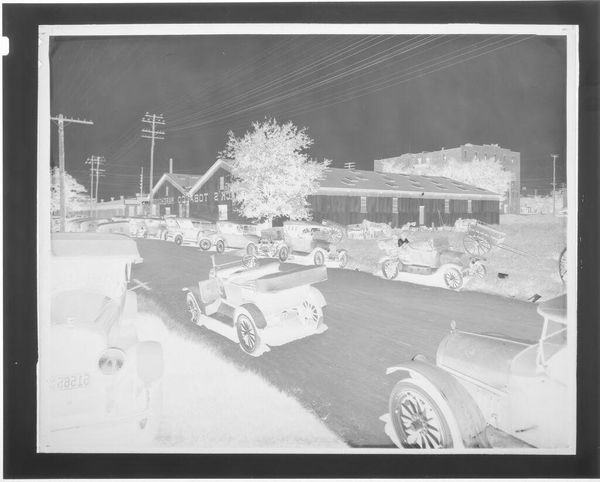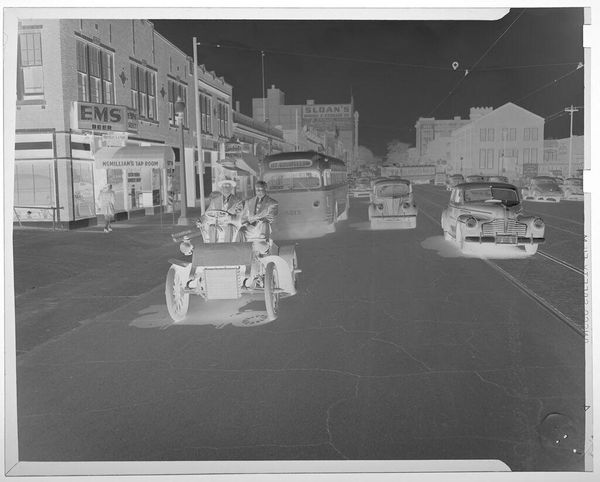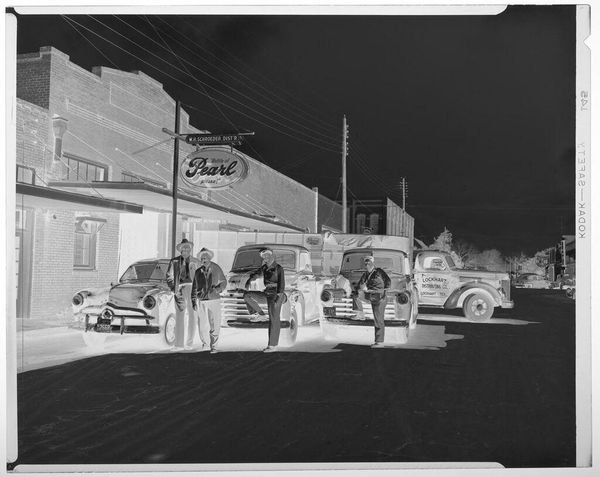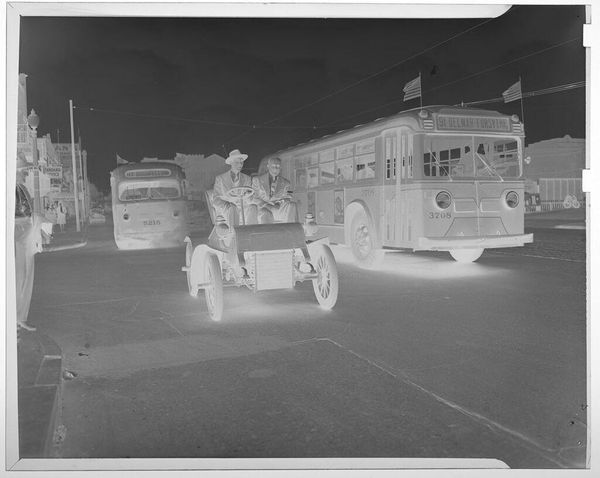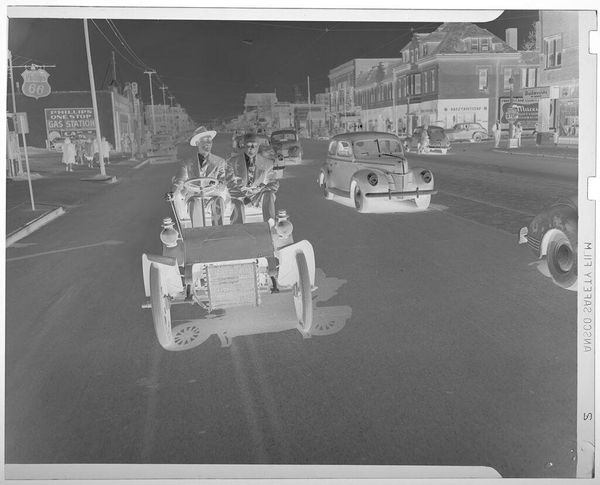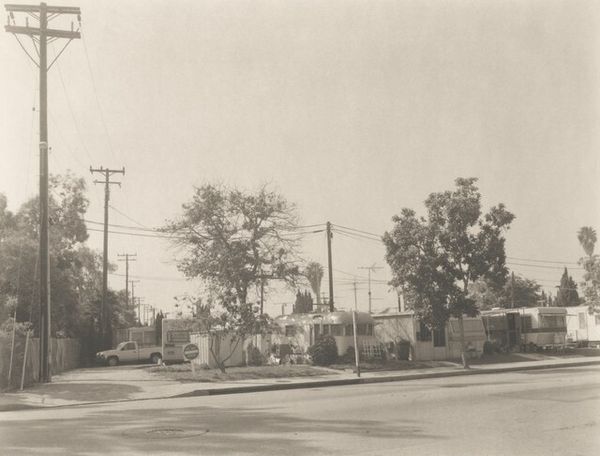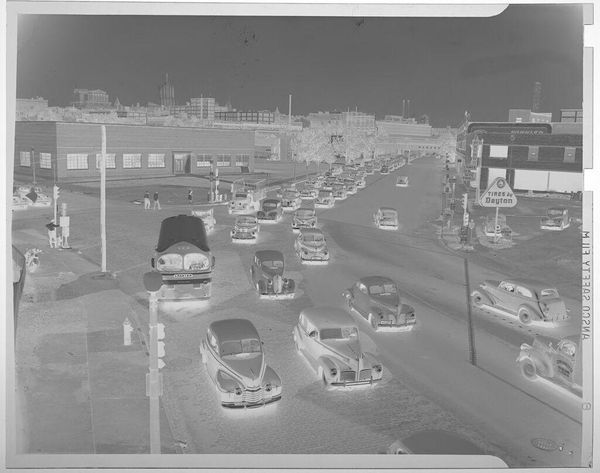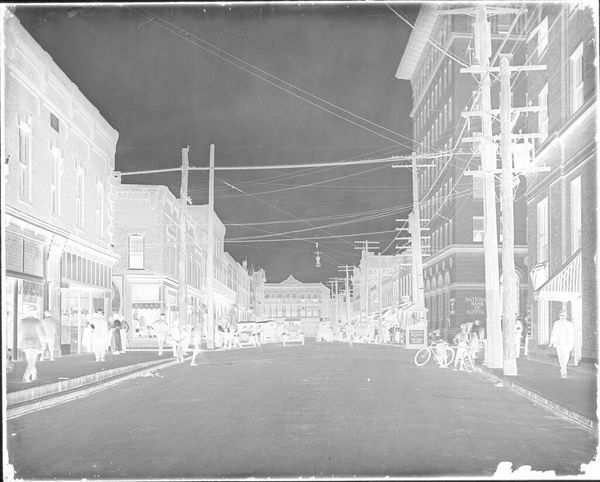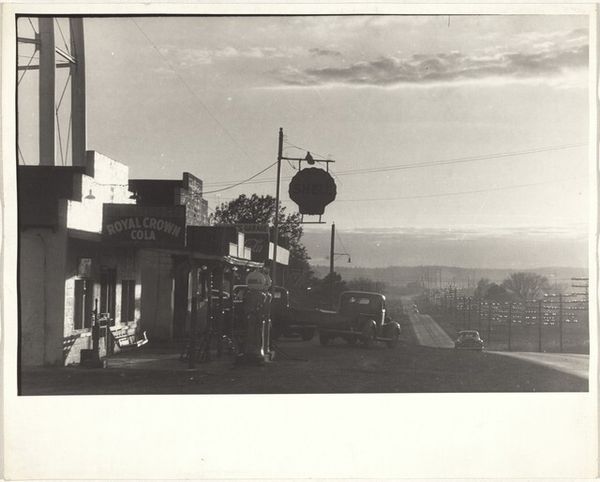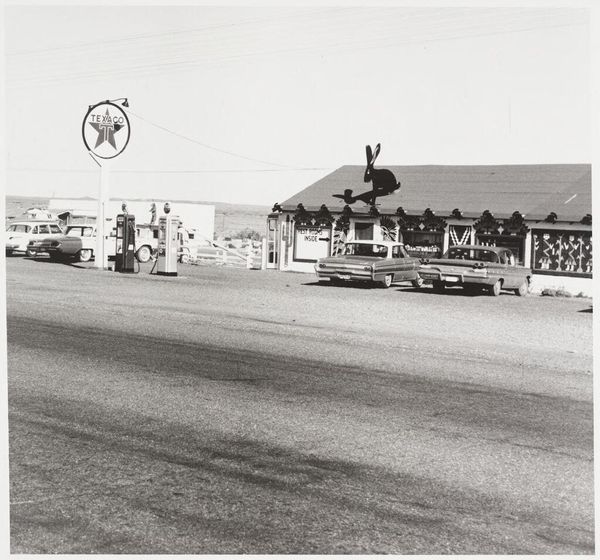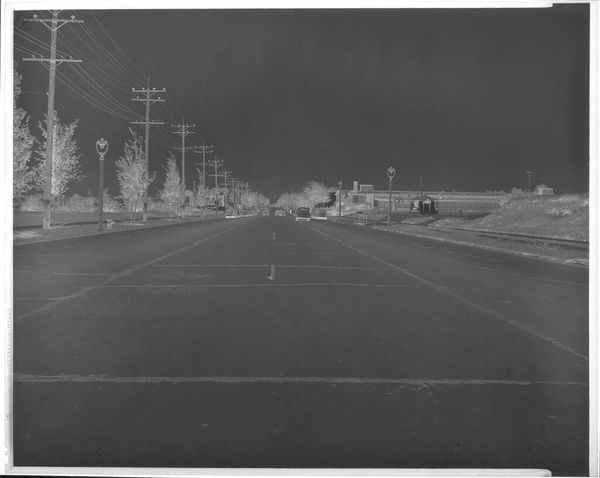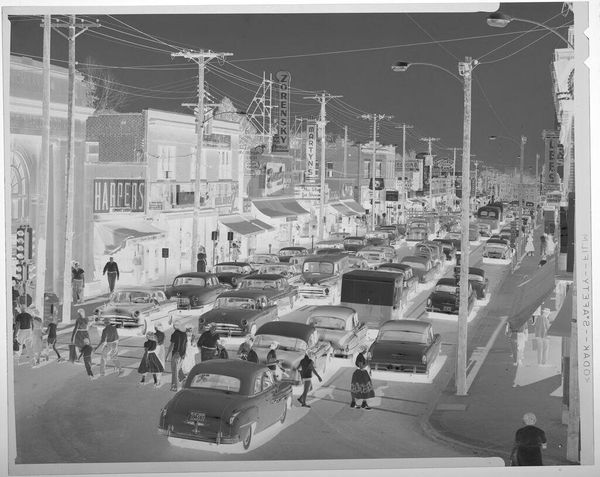
photography
#
urban landscape
#
street-photography
#
photography
#
postcolonial-art
#
cityscape
#
realism
Dimensions: height 5 cm, width 5 cm
Copyright: Rijks Museum: Open Domain
Editor: This photograph, "Seoul, December 1952," was taken by David Ketel. It feels immediately poignant, capturing a city street still bearing the weight of war, yet there’s something vibrant fighting through. What cultural narratives are woven into this photograph, beyond what initially meets the eye? Curator: Precisely. The photograph, beyond being a realistic portrayal, is thick with symbolic meaning related to cultural memory. What do you notice about the figures in relation to the structures and, particularly, to the vehicle? Editor: The figures feel small, almost overwhelmed by the urban landscape and definitely secondary to that brightly decorated vehicle, which almost looks like it shouldn't belong. Curator: Yes, observe how that vehicle serves as a jarring point of color, life, against the muted tones, signifying resilience amid hardship. Now, consider that the photograph was taken in 1952, during the Korean War. What persistent images might the buildings evoke, if anything? Editor: Ruins, loss...maybe resilience again, as the buildings are still standing despite apparent damage. Curator: They stand as markers of trauma, shaping identity. Yet, the eye is immediately drawn to the colorful vehicle which might be seen as celebratory. Its symbolic function, considering the desolation, is to push for hope, reconstruction, or simply endurance. It's a strong visual metaphor of cultural spirit trying to surface. What do you take away from how those two narratives are held within one picture? Editor: That even in times of devastation, culture and hope don't simply disappear; they find new forms. I wouldn't have considered the loaded symbolism at play without your insights! Curator: Indeed. It's through such symbols, embedded within images, that cultural continuity persists and speaks volumes across time.
Comments
No comments
Be the first to comment and join the conversation on the ultimate creative platform.
